Matilo (Leiden-Roomburg)
Q1863008Matilo: Roman fort, part of the limes in Germania Inferior, modern Leiden.
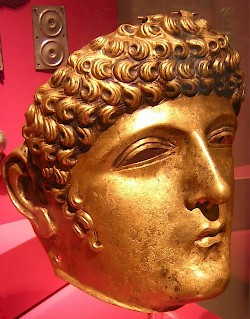
Matilo was built at the northern entrance of the canal of Corbulo, which still connects Voorburg, the ancient capital of the Cananefates, to the river Rhine. The fort, initially made of wood, was possibly founded at the time of the digging of the canal, which started in 47. The water course has been identified, and indeed, the remains of a Roman ship have come to light in 1912. However, there are few remains of this first building phase of the settlement.
Like many other military settlements in the Lower Rhine area, Matilo was destroyed during the Batavian revolt in 70, and reconstructed (again from wood). A third construction phase can be dated to the first quarter of the second century. This time, bricks were used to rebuilt the fort.
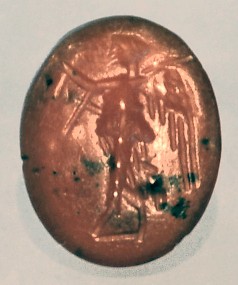
The site has been known since the early sixteenth century. In 1502, heavy walls, several inscriptions, statuettes of bronze (two lions and a representation of the goddess Minerva - presented six years later to the German emperor Maximilian of Austria), ceramics, Roman coins, bricks and roof tiles were discovered at the site of a monastery named Roomburg. Perhaps the walls were in fact medieval, but the remainder was undoubtedly Roman.
Several archaeological campaigns have been organized. In 1927, the discovery of the ditch was reported, but modern archaeologists have some doubts. On the other hand, a terracotta figurine suggested again that the site was Roman. Forty-three years later, in 1970, a georadar campaign proved the existence of a small fort of some 82 x 100 meters and headquarters measuring 32 x 32 meters. These remains must belong to a building phase in the second century, but have not been excavated (Matilo is a protected monument).
Blocks of tufa, roof tiles, bricks, coins and potsherds have been found on several occasions. One inscription, with the titulary of an emperor, was discovered (now at the castle of Duivenvoorde at Voorschoten). It mentioned that Septimius Severus restored a magazine that had collapsed, and it can be dated to 196-198.note
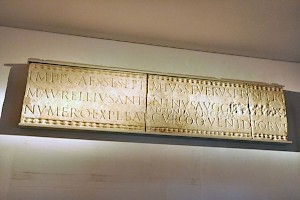
Other texts show that at least three auxiliary units occupied the site: the Cohors I Lucensium Hispanorum, originally from Hispania, the Cohors XV voluntarium civium Romanorum pia fidelis, and finally the Numerus exploratorum Batavorum (scouts). This last unit is mentioned in another inscription.note
IMPPeratores CAESareS Lvcivs SEPTIMIVS SEVERVS PIVS PERTINAX ET
Marcvs AVRELLIVS ANTONINVS AVGGvsti ET Lvcivs SEPTimivs GETA CAESar Donvm Dedervnt
NVMERO EXPLORATORVM BATAVORVM ANTONIAANORVM
CVRante CO Qvinto VENIDIO RVFO LEGato AVGGvstorvm PRo PRaetoreThe imperatores and caesars Lucius Septimius Severus Pius Pertinax and
Marcus Aurelius Antoninus, the emperors, and Lucius Septimius Geta, caesar, presented this
to the Antoninian Unit of Batavian Scouts
and propraetor Quintus Venidius Rufus, the governor of our emperors, took care of it.(more...)
The name of Geta was erased after his assassination (damnatio memoriae), and the title "Antoninian" is a later addition.
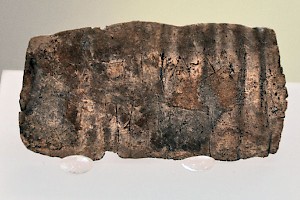
In 1994, a boring campaign established that in the neighborhood of the fort were a cemetery and a village, which must at first have looked like a city to the people living in this area, the Cananefates, who were not accustomed to urban live. Concentrations of phosphate indicated the extent of human presence at the site, and it seems reasonable to assume that the earlier building phases of Matilo were larger than the 82 x 100 meters of the second-century fort. The presence of a wall was established. The fragment itself was small, but in 1999, a second part was excavated.
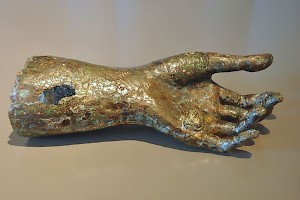
Three years before, an extremely fine bronze mask had been discovered that used protected the face of a Roman cavalry man. It was immediately called "Gordon", because of its similarity to the face of a well-known Dutch singer. The mask can be dated to the years between the reconstruction of Matilo after the Batavian revolt (70) and the emperor Hadrian's visit to the area in 121.
The visit of Hadrian coincided with construction work along the Dutch section of the limes. This may have happened at Matilo as well. The road along the limes was identified in 2006.
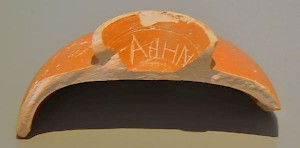
In the third century, the Lower Rhine area became a wetland. Although it is possible that the fort was once more rebuilt and fortified during the first quarter of the third century (like many other forts in Germania Inferior), Matilo was evacuated. After 243, there was a last, temporary occupation of the site.
Today, the walls of the ancient fort have been reconstructed.
Note
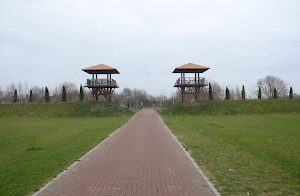
Since about 1575, the ancient name Lugdunum has been used to describe Leiden. This is incorrect, although at first sight, the two names look similar. However, the Medieval name Leithon is derived from a little river called Leede, which simply means "watercourse". Ancient Lugdunum is identical to Katwijk.
Literature
- E. Lems, Op zoek naar Matilo: sporen van de Romeinen in Leiden (1995)
- C.R. Brandeburgh and W.A.M. Hessing, Matilo - Rodenburg - Roomburg. De Roomburgpolder: van Romeins castellum tot moderne woonwijk (2005)
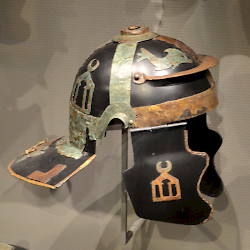 Leiden-Matilo, Roman helmet |
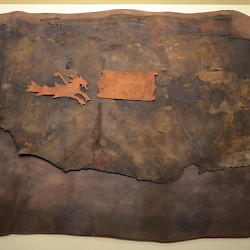 Leiden-Matilo, Shield cover |
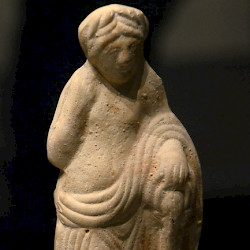 Leiden-Matilo, Figurine of a goddess |
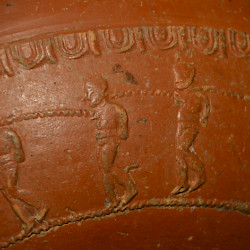 Leiden-Matilo, Samian ware of slaves being led away |